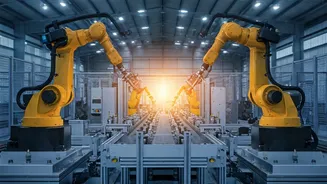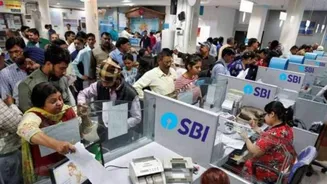Manufacturing's Vital Role
A strong manufacturing sector is fundamental to India's economic advancement. Historically, nations that have successfully industrialized have seen significant
improvements in their overall GDP. The NITI Aayog report emphasizes this, highlighting manufacturing's capacity to create employment and stimulate economic expansion. By focusing on manufacturing, India can diversify its economy, reducing reliance on sectors susceptible to global volatility. This strategic shift not only builds resilience but also positions India as a major player in the global economy, paving the way for increased exports and attracting foreign investment. The report underscores the necessity of fostering an environment where manufacturing thrives, leading to sustainable and inclusive economic development. This involves creating policies that support innovation, technological advancement, and skills development within the manufacturing domain.
Enhancing Competitiveness Globally
To become globally competitive, Indian manufacturers must embrace several key strategies. Firstly, there’s a critical need for substantial investment in infrastructure, encompassing efficient transportation networks, reliable power supplies, and state-of-the-art logistics. Secondly, simplifying regulations and reducing bureaucratic hurdles is vital to create a conducive business environment that attracts both domestic and international investment. Thirdly, investing in cutting-edge technologies and adopting digital transformation strategies are essential to improve productivity and quality. Furthermore, upskilling the workforce is necessary to meet the demands of advanced manufacturing processes. The government's role includes formulating and implementing supportive policies, offering incentives, and fostering public-private partnerships. Such efforts facilitate the adoption of best practices, enhance product standards, and ensure Indian products meet global benchmarks. Continuous improvement in these areas will drive the sector towards greater competitiveness.
Boosting GDP Share
Increasing the manufacturing sector's contribution to India's GDP requires a multifaceted approach. The government aims to raise the share of manufacturing in GDP through strategic initiatives like the 'Make in India' campaign, designed to attract investment and stimulate production. This campaign encourages local manufacturing and aims to enhance India's integration into global supply chains. Investment in research and development is crucial to foster innovation and the development of new products. Simultaneously, streamlining processes, reducing red tape, and creating a more business-friendly ecosystem will attract both domestic and international investors, thereby increasing manufacturing output. Furthermore, encouraging exports and minimizing trade barriers will enable Indian manufacturers to tap into global markets. All of these combined efforts are vital to achieve the ambitious targets for manufacturing's contribution to GDP, driving overall economic expansion.
Creating Employment Opportunities
The growth of the manufacturing sector has a direct correlation with employment generation. Manufacturing is labor-intensive, providing significant employment opportunities across various skill levels. Encouraging the sector’s expansion translates directly into a reduction in unemployment rates, benefiting the large workforce. Policymakers should focus on initiatives that boost job creation, such as targeted skill development programs that equip workers with the necessary skills for the evolving manufacturing landscape. Support for small and medium-sized enterprises (SMEs), which are major employers, is also critical. Promoting labor-intensive manufacturing processes, where appropriate, can provide further impetus to employment. Additionally, creating an environment that supports entrepreneurship and attracts foreign investment can drive employment growth. Ultimately, a thriving manufacturing sector will be instrumental in improving living standards and reducing poverty through job creation.
Sustainable Economic Growth
Achieving sustainable economic growth demands a commitment to environmentally friendly practices within the manufacturing sector. This includes promoting resource efficiency, reducing waste, and adopting cleaner production technologies. Implementing circular economy models, where materials are reused and recycled, will minimize environmental impact and promote resource efficiency. Government policies can incentivize the adoption of sustainable practices through tax breaks, subsidies, and regulatory frameworks. Encouraging manufacturers to adopt green technologies not only lessens environmental footprints but also enhances their competitiveness by meeting the demands of environmentally conscious consumers. The focus on sustainability will ensure that economic growth is both environmentally responsible and socially equitable, guaranteeing long-term viability for the Indian economy.
















